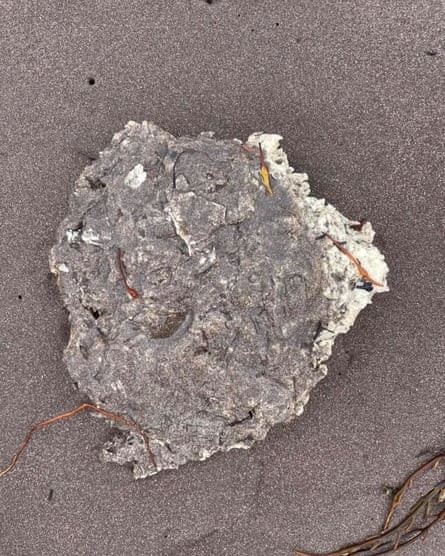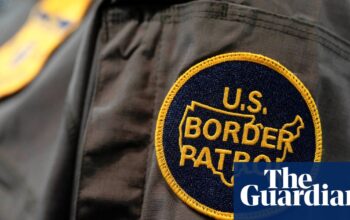They are slimy on the outside, firm and spongy on the inside and surprisingly combustible. And in recent months, they have been washing up on the shores of Newfoundland.
The depths of the Atlantic have long held mysteries, but the riddle of the mysterious white “blobs” spotted on the beaches of the eastern Canadian province has baffled both residents and marine scientists.
Broader attention was first drawn to the blobs by a post on the Beachcombers of Newfoundland and Labrador Facebook group, a 40,000-member page largely devoted to the collection of sea glass. A man named Philip Grace uploaded an image of a pale, gooey mass, which he compared to the dough used to make toutons, a Newfoundland fried delicacy.

Grace’s post about the blobs, which he said ranged in size from “dinner plate right down to a toonie [the Canadian two-dollar coin]”, prompted a frenzy of possible explanations – paraffin wax, sea sponges, mould and ambergris – none of which withstood closer scrutiny.
Dave McGrath, a resident of Patrick’s Cove, was on the beach when he spotted “hundreds, just hundreds of them” scattered in the sand.
“They looked just like a pancake before you flip it over, when it has those dimpled little bubbles. I poked a couple with a stick and they were spongy and firm inside,” he said. “I’ve lived here for 67 years and I’ve never seen anything like this, never.
“They sent the Coast Guard over and I asked them how bad it was. They told me they had 46km [28 miles] of coastline littered with this stuff and had no idea what it was,” said McGrath. “Is it toxic? It is safe for people to touch?”
The gooey shapes aren’t the first blobs to excite locals. In 2001, residents discovered the Fortune Bay “Blobster” sea monster that had washed ashore – a ragged and oozing white mass. Months later, however, researchers at Memorial University of Newfoundland concluded it was part of a decomposing sperm whale corpse.
These new blobs don’t appear to be linked to whales, despite commenters in the Beachcombers group suggesting they could be “whale boogers”, “whale sperm” or “whale vomit” – all of which have been ruled out.
McGrath speculated that the substance could be discharge from ships travelling to and from the Come By Chance refinery, 80km north of Patrick’s Cove.
Federal scientists have also been on the case but have produced few leads.
So far, they know more about what it’s not than what it is. It’s not a petroleum hydrocarbon, a petroleum lubricant or a biofuel. A full battery of tests could take months.
“An answer would be nice. It’s not often you find something that stumps people who know this place and these waters,” said McGrath.
Until then, one local had a (possibly touton-inspired) suggestion to those curious about what the blob might be: “Fry it up, put some molasses on it, let us know how it was.”
Source: theguardian.com


